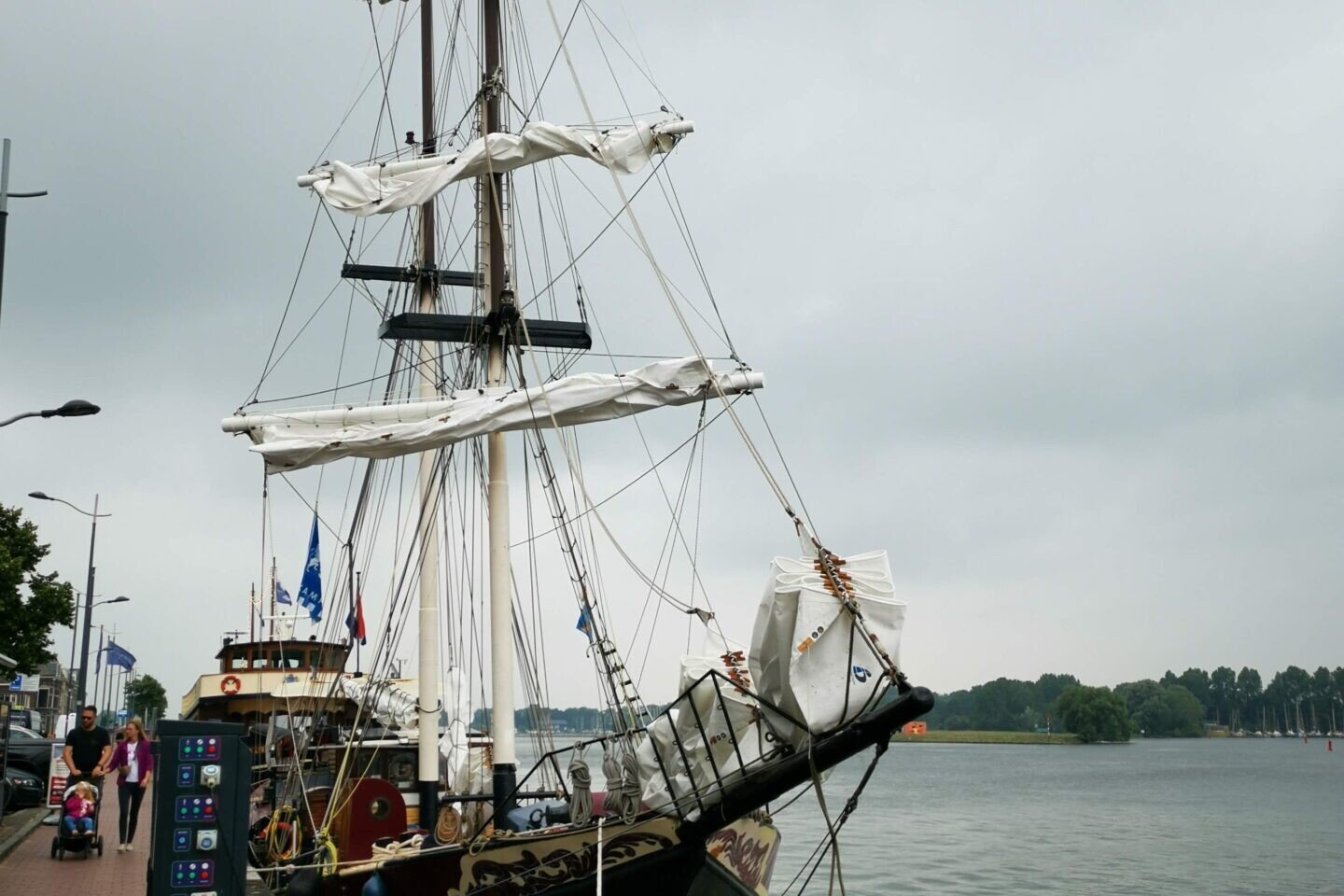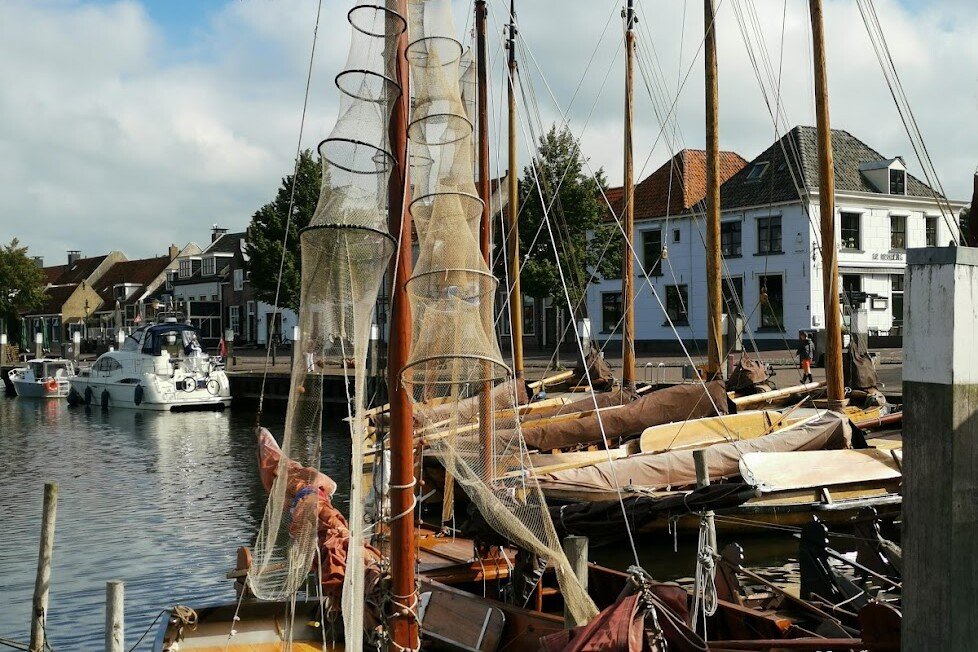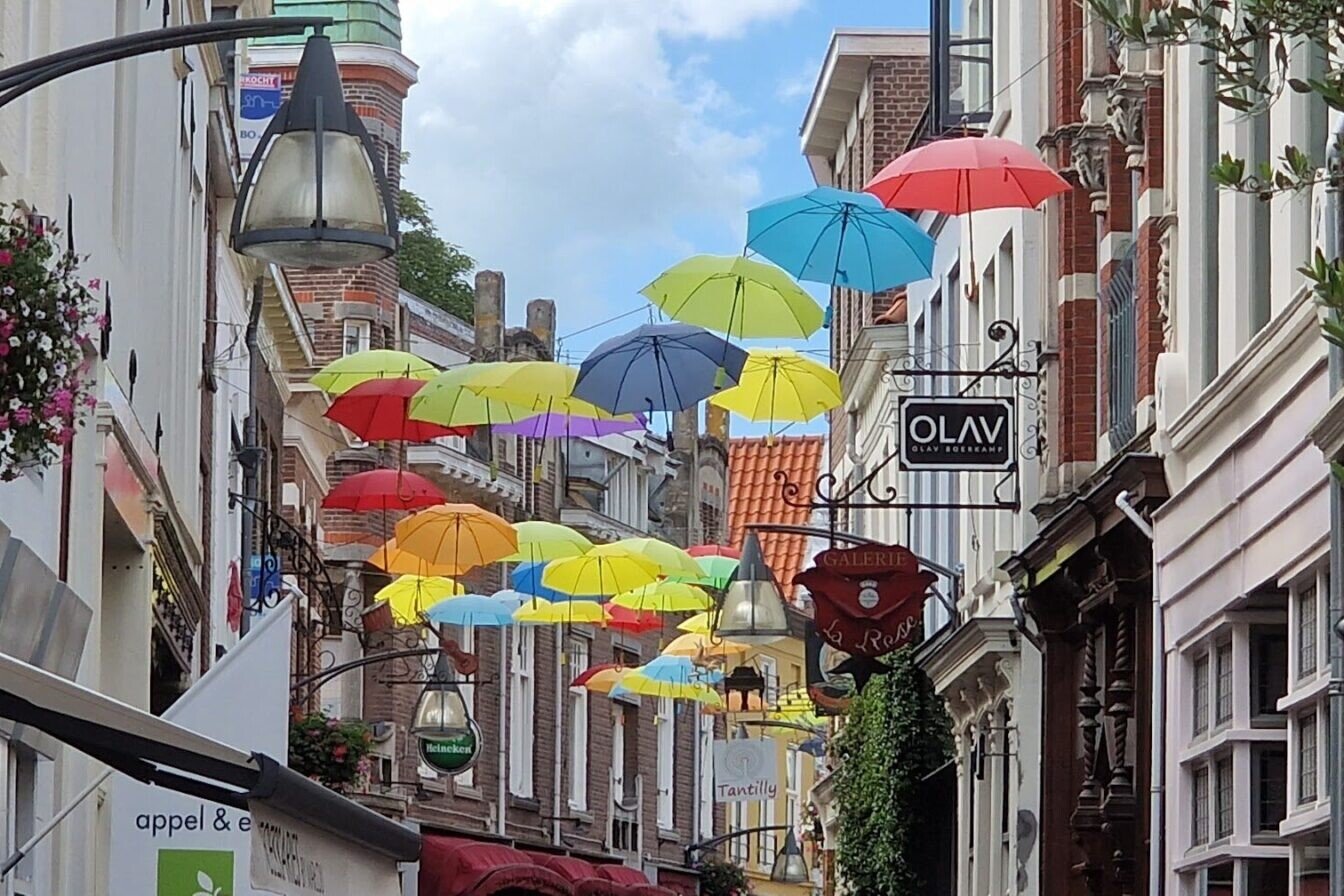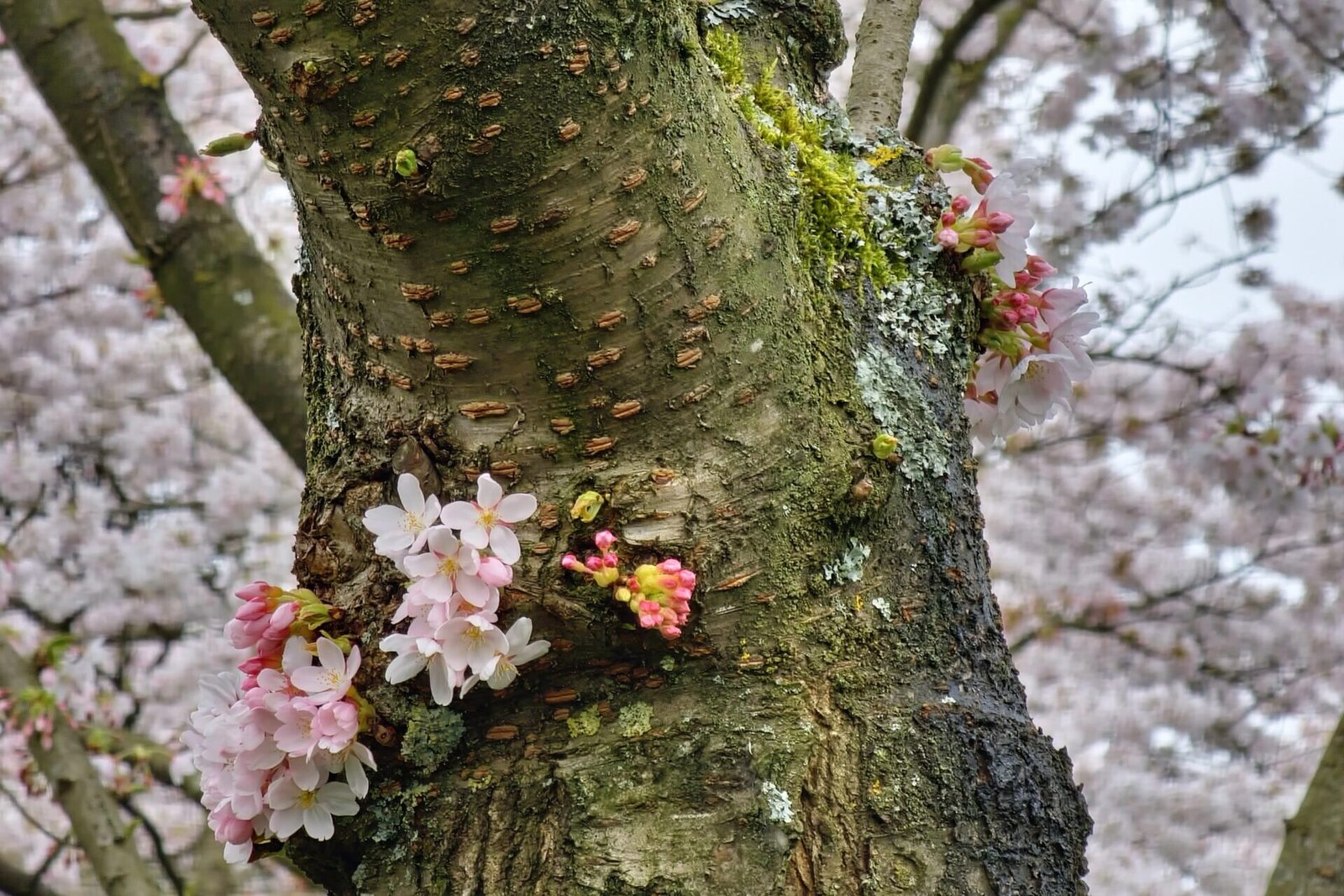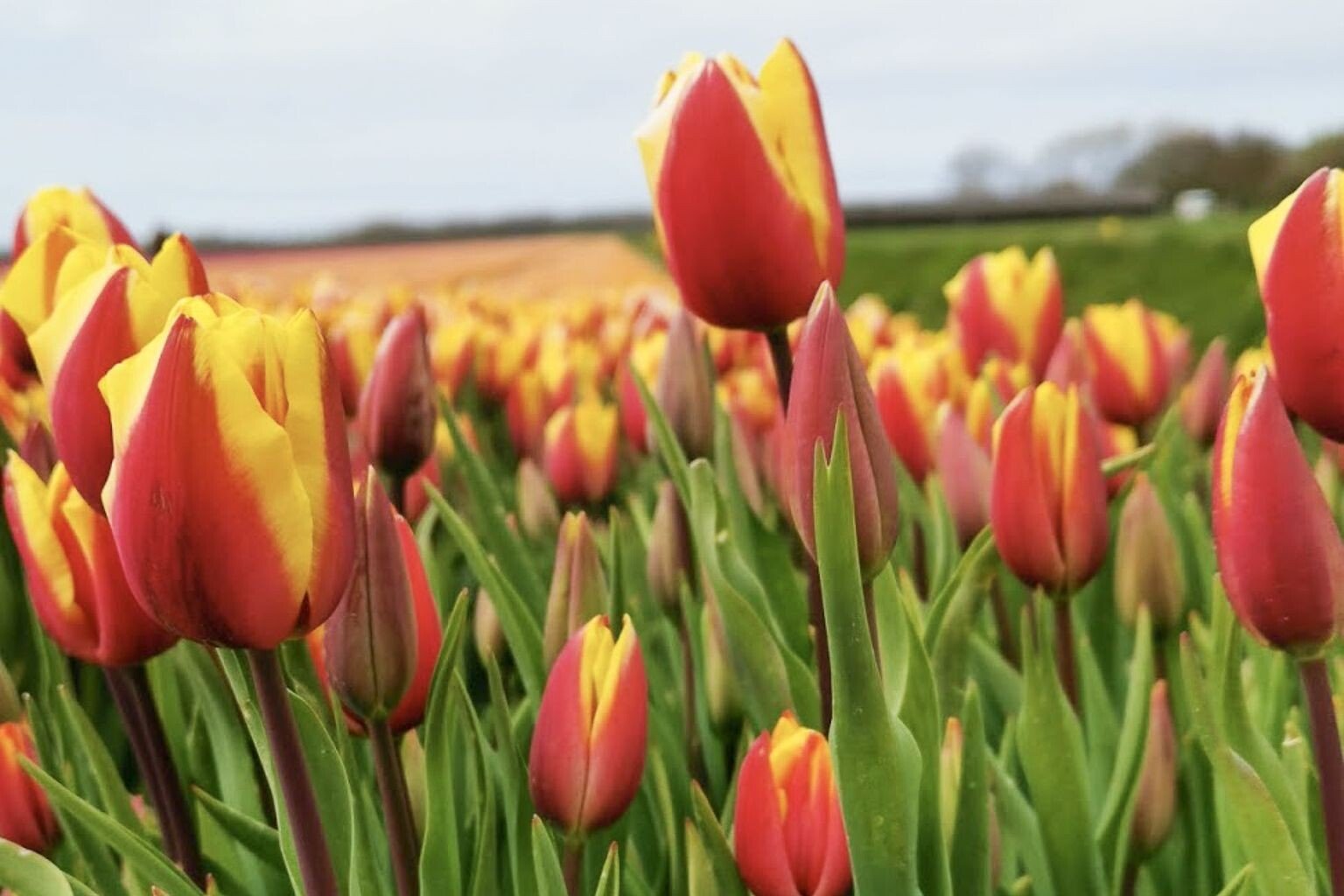Harderwijk is a charming city located a one-hour drive from Amsterdam in the Gelderland province of the Netherlands. This historic town is renowned for its rich maritime heritage, delightful seaside atmosphere, and well-preserved medieval city center. With a population of over 45,000, Harderwijk offers a unique blend of history, culture, and natural beauty. Visitors to this lovely city will enjoy interesting architecture, many restaurants, and a variety of outdoor activities. Whether you’re interested in exploring ancient landmarks, having a good meal, or simply enjoying a great atmosphere, Harderwijk has something for everyone to discover and enjoy. This guide will walk you through some of the noteworthy things to do in Harderwijk. Let’s take a look at what Harderwijk has to offer.
Disclosure: Some of the links in this post may be affiliate links. If you decide to book through these particular links, we will receive a small commission from your purchase at no extra cost to you. We are truly grateful for your support!
Quick Info
Best Reasons to Visit Harderwijk
- Harderwijk is a charming historic town with a rich cultural heritage. You can explore the well-preserved medieval city center, with its beautiful old buildings and cobblestone streets, dating back to the 14th century.
- Harderwijk is located on the shores of the Veluwemeer, a large lake that offers a range of water activities such as swimming, sailing, and fishing.
- The city is surrounded by the natural beauty of the Veluwe region, with its forests, heathlands, and sand dunes. You can explore the area on foot or by bike.
- Harderwijk is known for its delicious seafood. There are numerous seafood restaurants and fish stalls where you can enjoy these local specialties.
- Harderwijk is conveniently located for day trips to other popular destinations in the Netherlands. It is just a short drive from cities like Amsterdam, Utrecht, and Arnhem, making it an ideal base for exploring the country.
Our Tips
- The old center is very romantic in the late afternoon / early evening, especially the waterfront area.
- You can enjoy delicious seafood, including kibbeling (fried fish) and smoked eel, at Paling Pure Passie fish stand on the waterfront.
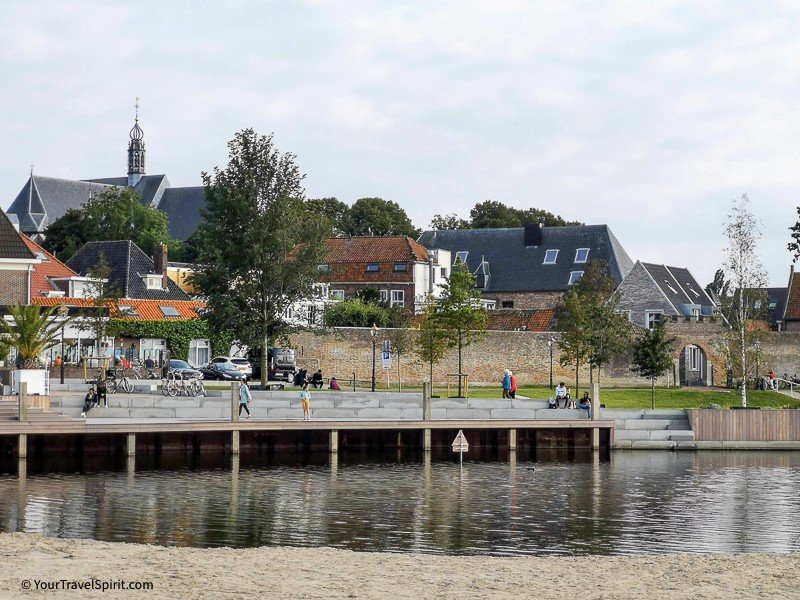
A Brief History of Harderwijk
Harderwijk has a rich and varied history that spans over several centuries. Its journey began in 1231 when it was granted city rights, marking the official establishment of the town.
In the 13th century, Harderwijk flourished as a trading city due to its strategic location on the shores of the Zuiderzee, a shallow bay in the North Sea. The town served as a vital center for maritime trade, attracting merchants and traders from all over Europe.
Harderwijk’s prominence grew further in the 14th century when it became a member of the Hanseatic League, an influential trading alliance of cities across northern Europe. This membership allowed the town to expand its reach and engage in lucrative trade relationships with other Hanseatic cities.
One significant aspect of Harderwijk’s economy was fishing. This right granted exclusive fishing privileges to the town, thus contributing to its economic growth. The large amount of fish in the nearby waters boosted trade and led to the establishment of a thriving fish industry.
However, Harderwijk faced numerous conflicts and challenges in the 16th century. The Spanish-Dutch War and the religious conflicts of the Protestant Reformation had a profound impact on the town. Economic decline, political instability, and social unrest plagued Harderwijk during this period.
Despite these challenges, Harderwijk managed to persevere and has emerged as a charming town, known for its rich history and beautiful architecture.
Harderwijk as Hanseatic city
The Hanseatic League, which originated in the 13th century in northern Europe, had a profound influence in the region. The league facilitated the exchange of goods and provided a platform for political and economic cooperation among its member cities. It fostered a sense of unity and solidarity, allowing the Hanseatic cities to leverage their combined strength in negotiations with other regions and states.
The Hanseatic Cities of the Netherlands are a group of historically significant cities that played a crucial role in the Hanseatic League. Among these cities, Harderwijk holds a prominent position due to its strategic location on the shores of the Zuiderzee.
Harderwijk was an important member of the Hanseatic League, a powerful trading alliance that dominated maritime trade in Northern Europe during the Middle Ages. As a member of this league, the city flourished economically, becoming a prosperous center for trade, especially in the fish and salt industries. Harderwijk’s significance in the Hanseatic League is evident in its well-preserved medieval city center, which includes some of its former trading houses and warehouses.
In addition to Harderwijk, there are other notable Hanseatic cities in the Netherlands, such as Deventer and Kampen. Those cities were important trading hubs during the medieval period, with Deventer serving as a center for commerce, education, and culture while Zutphen grew wealthy from the wool trade.
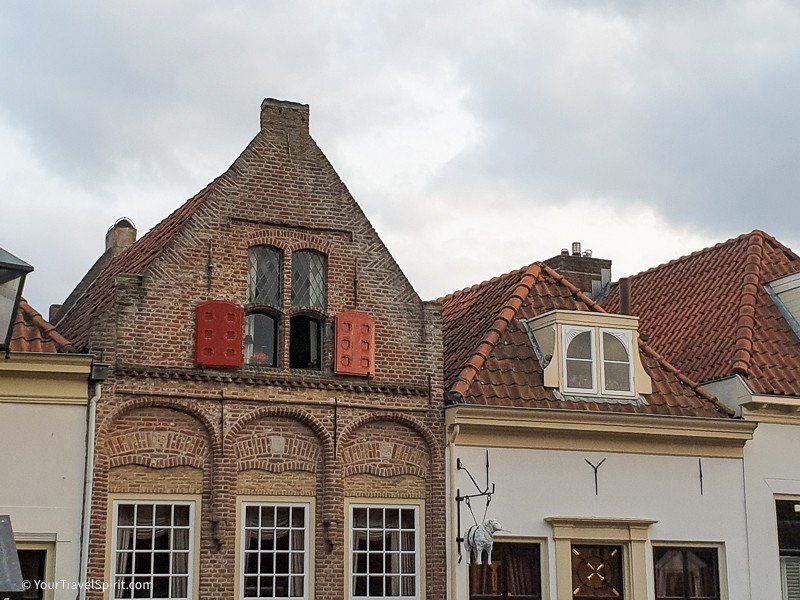
Best Things to do in Harderwijk
Stroll Around the Old Town
One of the best ways to explore Harderwijk is by foot, simply to get lost in the old town without preparing ahead a special route.The old town is small and walkable. It is surrounded by several parking places (see below), and each one of them can be a good place to park for touring Harderwijk’s old town.
The best place to start the tour will be at the Grote Kerk (Kerkplein 1, 3841 EC Harderwijk), a beautiful church that dates back to the 14th century. From there, you can stroll down the charming streets of the old town, enjoy the historic architecture, and pop into some of the cute little shops and cafes.As you make your way toward the harbor, you’ll pass by the Vischpoort, a historic gate that once served as the entrance to the city. The harbor is a lovely and busy play at once, with fishing boats and pleasure craft coming and going throughout the day. Stroll along the waterfront and stop for a drink or a bite at one of the many cafes and restaurants along the shore.
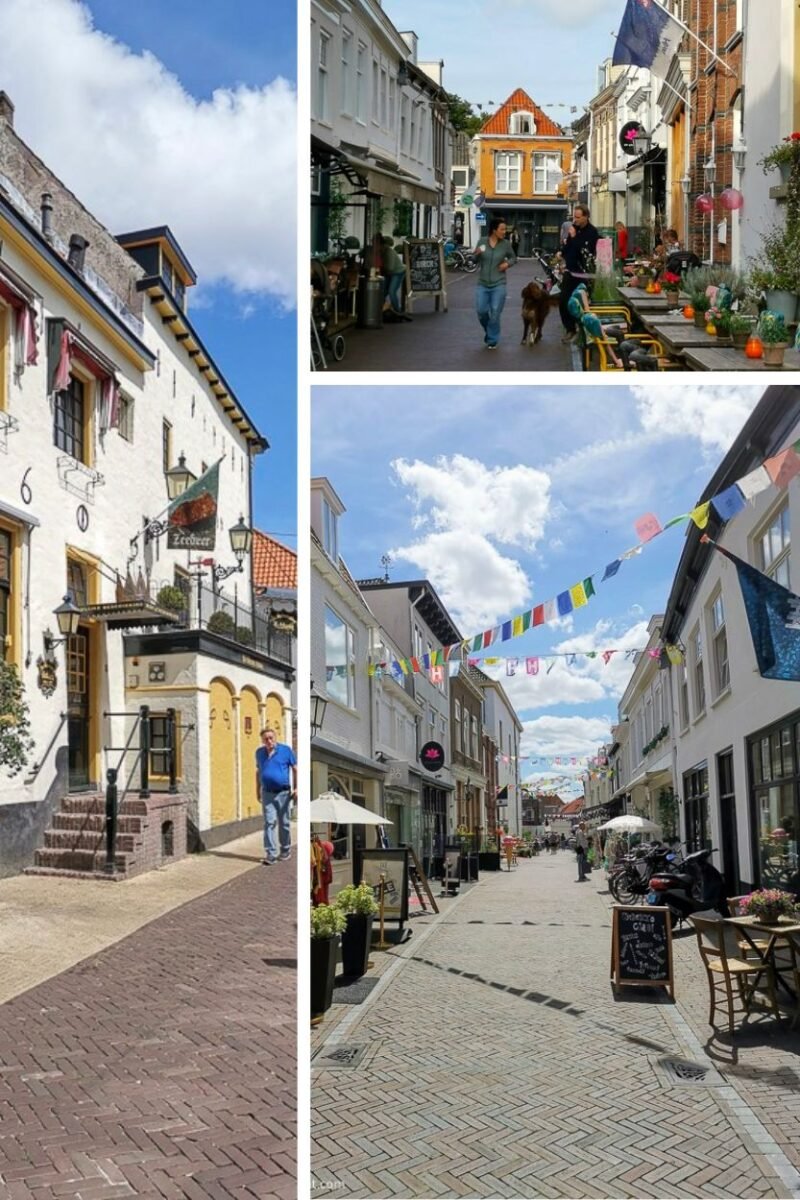
Walk along the remains of the walls and the gates
The City Gates and Wall of Harderwijk are iconic historical structures that showcase the rich heritage of this Dutch town. These architectural constructions have stood the test of time and hold great historical significance.
The city gates and the wall were constructed centuries ago to protect the town of Harderwijk from external threats. The wall surrounded the entire town, creating a barrier that safeguarded the inhabitants from attacks and invasions. The construction of the wall began in the 14th century, with continuous modifications and expansions over the years.
These structures played a crucial role in the defense and trade history of Harderwijk. As a prominent trading center during the Middle Ages, the city gates served as entry points for merchants and traders from all over Europe. The wall acted as a fortress, providing security to the bustling trade activities within the town. The strategic location of Harderwijk, situated on the Zuiderzee, enabled the town to flourish as a port. The city gates facilitated the flow of goods in and out of the city, fueling its economic growth.
Notable city gates in Harderwijk include the Vischpoort, Smeepoort, and Luttekepoort. The Vischpoort, or Fish Gate, is the most well-known and dates back to the 14th century. It served as the main entrance to the city center. The Smeepoort and Luttekepoort are two other gates that also played significant roles in the town’s defense.

City Museum (Stadsmuseum) Harderwijk
The Stadsmuseum Harderwijk is the ideal destination to get deeper and better knowledge about the rich history of the city of Harderwijk. Situated in the heart of the city, this museum offers a comprehensive overview of the past, making it the perfect place for both locals and tourists to learn more about the intriguing stories that have shaped the vibrant community.
The museum covers the history of Harderwij. Additionally to this, the museum also offers a range of temporary exhibitions in various fields. From captivating art displays to insightful historical retrospectives, there is always something new and exciting to discover.
One of the fascinating aspects of the Stadsmuseum Harderwijk is that its ground floor is freely accessible during opening hours. This means that visitors can enjoy the immersive experience of the museum cafe and shop without having to purchase an admission ticket. Whether you are in search of a delicious cup of coffee or a unique souvenir to take home, the museum’s cafe and shop offer a delightful selection to cater to your needs.
For more information about opening hours and entrance fees please visit the the Stadsmuseum Harderwijk website.
Address: Donkerstraat 4, 3841 CC Harderwijk
The Old Synagouge
Since 1590 Jewish people have been living in Harerwijk and they are an important part of the city, especially when the university was opened in Harderwijk.Today, visitors can visit the old synagogue. In this synagogue, there is a permanent display of the Jewish life in Harderwijk. Also, a documentary film is being displayed that presents the history of the Jewish community in the area.Outside the building, there is a memorial wall that displays all the names of the Jewish community in Harderwijk who were murdered in the Holocaust.
Please note that visiting times are limited. For more information about opening hours please visit the Synagouge website.
Address: Jodenkerksteeg 1, 3841 BP Harderwijk
Marius van Dokkum Museum
Marius van Dokkum is one of the most famous painters and animators in the Netherlands.
In Harderwijk, you can find a museum that is dedicated to his work, which is full of humor. His paintings show real-life situations.
For more information about opening hours and entrance fees please visit Marius van Dokkum Museum website.
Address: Academiestraat 7, 3841 ES Harderwijk
Dolphinarium
Harderwijk Dolphinarium is one of Europe’s oldest and most famous marine mammal parks. This marine mammal park is home to a variety of dolphins, sea lions, walruses, and other sea creatures. You can watch the animals perform in shows or get up close and personal with them during interactive experiences. The park also has a water park and playgrounds for children.
The Dolphinarium offers daily shows where the dolphins showcase their remarkable intelligence and agility through a variety of tricks. In addition to the dolphin shows, the Dolphinarium also features demonstrations starring seals. The trainers highlight the seals’ remarkable abilities and intelligence, demonstrating the importance of conservation efforts to protect their habitats.
For more information about opening hours and entrance fees please visit Harderwijk’s Dolphinarium website.
Address: ZuiderzeeBoulevard 22, 3841 WB Harderwijk
It is important to note that attractions like the Dolphinarium are controversial, and not everyone agrees to visit such places. Some people argue that keeping marine mammals in captivity is unethical and goes against their natural instincts and behaviors.
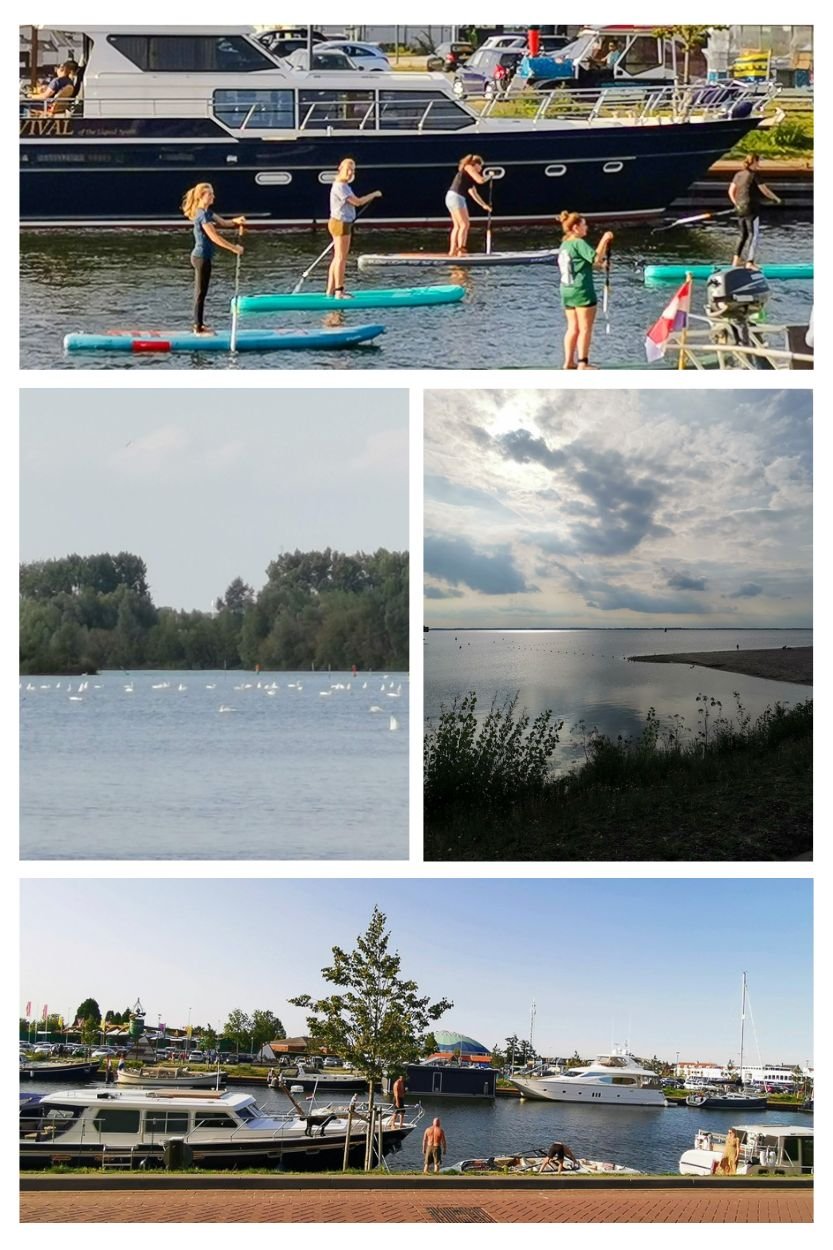
Getting to Harderwijk
By a Car
Driving to Harderwijk by car you will pass by a scenery of agricultural land and water.
To reach Harderwijk by car, follow the A28 highway (also known as the E232). Harderwijk is conveniently located along the A28, making it easily accessible.
An alternative drive suggestion – if you are driving from Amsterdam or northern area, consider driving through the Houtribdijk – a 26 km (16.1 miles) long dike with a great view of the water from both sides of the dike.
Parking in Harderwijk
Visitors to Harderwijk can find various parking lots conveniently located throughout the city. These parking lots are situated near popular areas, such as the city center and tourist attractions. It is possible to park on hourly rates or daily rates. However, it’s important to note that parking rates can vary depending on the specific location and the day of the week. It is advisable to check the precise rates at each parking lot before leaving your vehicle.
Regarding time restrictions, it’s essential to be aware of any parking limitations. Certain parking areas in Harderwijk have time restrictions, which may limit the duration of parking to a few hours. These restrictions aim to encourage turnover and ensure availability for all visitors, particularly in high-demand areas, also ay attention that there are parking spaces available only to cars with permits. Pay close attention to signage and regulations in the specific parking areas you choose.
Here are some details of parking garages that allow parking for visitors and also allow hourly and daily rates:
P2 Harderwijk (Parkeerplaats Dolfinarium/P2)Address: Havendijk 8B, 3846 AD Harderwijk, NetherlandsDescription: This parking garage is located near the Dolfinarium marine park. It is open from 8:00 AM to 9:00 PM, 7 days a week.
P8 Harderwijk (Zonneweide (P8))Address: Vuurtorenweg, 3846 AN Harderwijk, NetherlandsDescription: This parking garage is located near the beach and the Dolfinarium marine park. It is open 24 hours a day, 7 days a week.
P9 ScheepssingelAddress: Parkeerplaats, Parkeerplaats, Scheepssingel, 3841 KR Harderwijk, NetherlandsDescription: This parking garage is located in the city center. It is open 24 hours a day, 7 days a week.
P11 Vuldersbrink ParkeergarageAddress: 3841 BB Harderwijk, NetherlandsDescription: This parking garage is located near the waterfront. It is open 24 hours a day, 7 days a week.
P17 Klooster (Center Monastery – P17)Address: Klooster 2, 3841 EN Harderwijk, NetherlandsDescription: This parking garage is located in the city center. It is open from 12:00 PM to 11:59 PM, 7 days a week.
Harderwijk is well-connected by public transportation, making it easy to reach the city without a car. The town has a train station, Harderwijk Station, which is located in the city center. You can take a train from Amsterdam, Utrecht, or Zwolle to reach Harderwijk. The train ride from Amsterdam takes approximately 1 hour and 20 minutes. If you prefer to travel by bus, there are several bus routes that run through Harderwijk, including regional and local buses. The local bus service, operated by Syntus Gelderland, is an affordable and convenient way to get around the town.
Other Places To Visit In The Area
Outside of Harderwijk, you can find great places and attractions to visit, let’s go over some of them:
Lelystad is a city located just a short drive from Harderwijk. In Lelystad itself, there are plenty of top things to do. Nature and animal lovers can visit the famous Oostvaardersplassen, a sprawling nature reserve home to diverse bird species and wild horses, a good starting point would be the visitors center. Another attraction recommended to visit is the Batavialand, a unique shipyard where visitors can admire the impressive replica of the Dutch East India Company’s 17th-century ship, the Batavia, This ship is located next to the Batavia Stad, the outlet mall of Lelystad, which is the place for the shopping lovers. The Aviodrome, an aviation-themed museum that showcases a remarkable collection of aircrafts, is located in Lelystad small airport.
Deventer – a picturesque Hanseatic town located about 50 minutes of drive from Harderwijk. This hidden gem offers a unique off-the-beaten-path experience.
Hans & Gretel pancake house (Handsen Grietje Zeewolde) is not only a famous pancake restaurant but also a unique architectural gem. The building itself is inspired by the classic fairy tale of “Hansel and Gretel,” featuring a charming design of a traditional Dutch cottage. The story of Hans and Gretel comes to life as guests step into the restaurant, with rich details and cozy interiors that create for all visitors a sense of nostalgia and wonder.Outside, kids can find a fantastic playground, and inside the building, they can find slides, moving tables, puppets that come to life.
National Park De Hoge Veluwe is not only the most famous national park in the country but also one of the most visited. Its popularity can be attributed to its lovely natural beauty and diverse attractions. The park is known for its vast heather fields that blanket the landscape a colorful way, All those amazing views attracts many tourists to this park. As visitors wander through the trails, they may encounter a range of wildlife, including red deer, wild boars, and various bird species. These encounters add an element of excitement to the park experience and make it a favorite among nature enthusiasts.
It is important to note that an entry fee is required to access National Park De Hoge Veluwe. This fee goes towards the conservation and maintenance of the park, ensuring that future generations can continue to enjoy its natural wonders. Visitors should consider this fee a small investment in the preservation of this beautiful and diverse ecosystem. Also, in the park, there are museums and sculptures, and in the tourist season, there are special activities for kids.
While the park can be enjoyed year-round, the number of visitors tends to peak on Saturdays and Sundays, resulting in crowded trails and limited parking. Instead, planning a visit during weekdays or in the shoulder seasons can provide a more relaxed experience, allowing visitors to fully enjoy themselves in the tranquility and natural beauty of the park. It will be extra beneficial to consider visiting in the less crowded days, especially if someone in your family has special needs like Autism or another disability.
The park has a few parking lots. According to the park website, the least busy parking lots are Schaarsbergen or Hoenderloo.
See Also
Read about Other Hanseatic Cities in The Netherlands
You can save this guide for later on Pinterest by clicking on the photo below.
Thank you for taking the time to read this! If you have any questions or would like to share your experience, please leave us a comment below.
